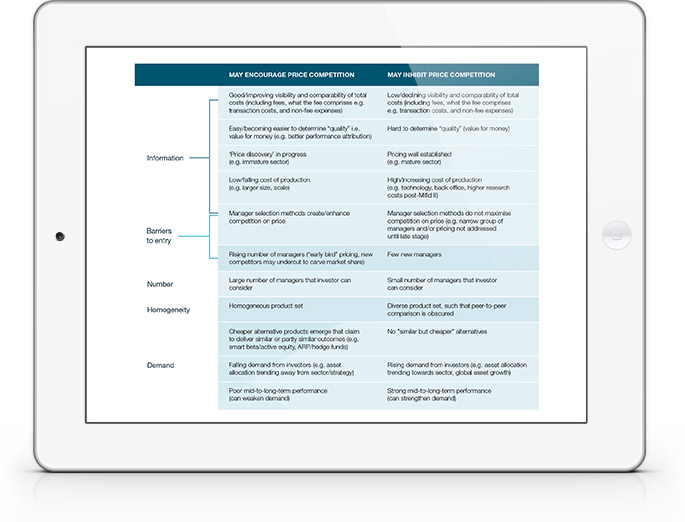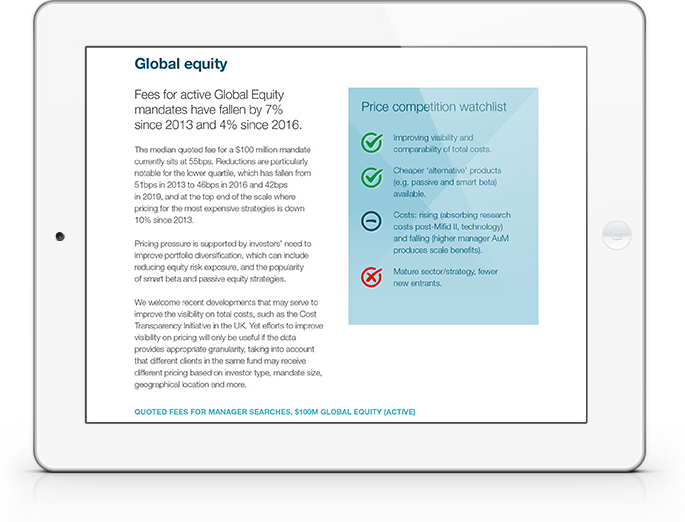
IN THIS PAPER
The latest fee trends. Data based on real fees quoted by managers for real mandates – not surveys or rack rates. Key areas where median fees have improved include EMD, EM Equity, Unconstrained Fixed Income, Global Equity, FoHFs and certain Private Markets sectors. The report also explores interesting pricing dynamics in Multi Asset, Alternative Risk Premia, China A-Shares and more.
Competition watchlists. Why are fees falling in certain areas yet remaining resilient in others? At-a-glance ‘competition watchlists’ highlight key factors driving pricing in different asset classes including new market entrants, investor appetite, the rise of cheaper alternatives, visibility of total costs and more.
Obtaining better terms.Investors can employ a range of tools to improve value for money. This study considers mandate consolidation, performance attribution, hidden cost analysis, performance fee structures and more.

WHY DOWNLOAD?
Asset owners such as pension funds continue to apply pressure on fees. Yet the investment management industry is not one in which ‘price competition’ functions efficiently, due in part to a lack of visibility on fees and overall costs.
This study contains two parts. The first, ‘fee trends,’ examines notable trends within certain asset classes and considers the drivers of change. The second, ‘obtaining better terms,’ considers various ways in which investors may seek to improve efficiency, even in sectors that may not be experiencing fee compression.
Important Notices
This commentary is for institutional investors classified as Professional Clients as per FCA handbook rules COBS 3.5R. It does not constitute investment research, a financial promotion or a recommendation of any instrument, strategy or provider. The accuracy of information obtained from third parties has not been independently verified. Opinions not guarantees: the findings and opinions expressed herein are the intellectual property of bfinance and are subject to change; they are not intended to convey any guarantees as to the future performance of the investment products, asset classes, or capital markets discussed. The value of investments can go down as well as up.


 English (Global)
English (Global)  Français (France)
Français (France)  Deutsch (DACH)
Deutsch (DACH)  Italiano (Italia)
Italiano (Italia)  Dutch (Nederlands)
Dutch (Nederlands)  English (Canada)
English (Canada)  French (Canada)
French (Canada) 

